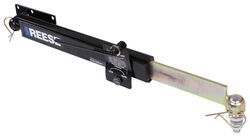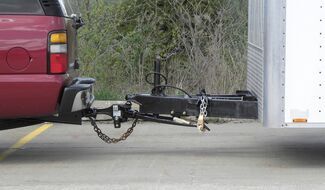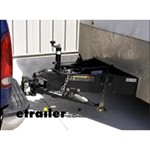
Replacing Weight Distributing Shank to Combat Trailer Sway
Question:
I recently upgraded my tow vehicle from a dodge ram 1500 to a ford f250. My camper is 27ft. and weighs approximately 7000lbs. I am having a problem getting my hitch setup right. I can get my front and rear wheel openings back to a 1/4inch and 1/2inch of the unloaded measurement but I still have a lot of sway. Im thinking I might need to get the front of the trailer down lower to get more weight on the tongue? If so I think I need this shank 3215 to replace 54970. Thanks for help.
asked by: Richard M
Expert Reply:
It sounds like the weight distribution is dialed in correctly. How the trailer is loaded can have an effect on trailer sway. You typically want the tongue weight to be about 10 to 15 percent of the fully loaded trailer weight. Moving some gear toward the front of the trailer will usually help combat trailer sway. It is also important that the trailer be towed as close to level as possible. If your trailer is level, and you have the ground to wheel opening as close as you mentioned, going with a different shank is not the answer.
Any sway NOT caused by oncoming traffic, ruts in the pavement or crosswinds would tend to indicate a suspension problem, a bent axle or unevenly filled tires. Make sure to rule all that out.
Which W/D system are you currently using? A standard chain suspended system like part # RP66022 is going to offer very minimal sway control by the metal to metal contact between the trunnion or round bar and the weight distributing head. Adding a friction sway control unit like part # 83660 will help resist sway, and for trailers 26 feet or longer like yours, using two friction sway units, one for each side is recommended. The top of the line system for preventing sway before it can occur is the Reese Dual Cam system, like part # RP66084. The cams on the system will lock into the hooks at the end of the spring bars. This forces the trailer to stay directly in line behind the tow vehicle unless the vehicle takes a turn. When the vehicle turns, the camber of the trailer changes momentarily (like making a turn while you are pushing a wheelbarrow), allowing the spring bar on the outside of the turn to pop off of the cam. This disengages the system and allows you to easily negotiate the turn, when the hook pops back into place.
I have linked you to our Weight Distribution Help article, which contains information you might find helpful.
If you can provide the manufacturer and the model number of your existing weight distribution system, I would be happy to make some specific recommendations for you.

Products Referenced in This Question
Reese Friction Sway Control Kit - Economy - by Draw-Tite, Reese and Hidden Hitch
- Accessories and Parts
- Weight Distribution Hitch
- Sway Control Parts
- Reese
more information >
Reese Weight Distribution w/out Shank - Trunnion Bar - 12,000 lbs GTW, 1,200 lbs TW
- Weight Distribution Hitch
- WD Only
- No Sway
- Shank Not Included
- Electric Brake Compatible
- Fits 2 Inch Hitch
- 1000 lbs
- 1100 lbs
- 700 lbs
- 800 lbs
- 900 lbs
- Reese
more information >
Strait-Line Weight Distribution System w/ Sway Control - Trunnion Bar - 12,000 lbs GTW, 1,200 lbs TW
- Weight Distribution Hitch
- WD With Sway Control
- Some Sway
- Includes Shank
- Electric Brake Compatible
- Fits 2 Inch Hitch
- Allows Backing Up
- 1000 lbs
- 1100 lbs
- 700 lbs
- 800 lbs
- 900 lbs
- Reese
more information >









